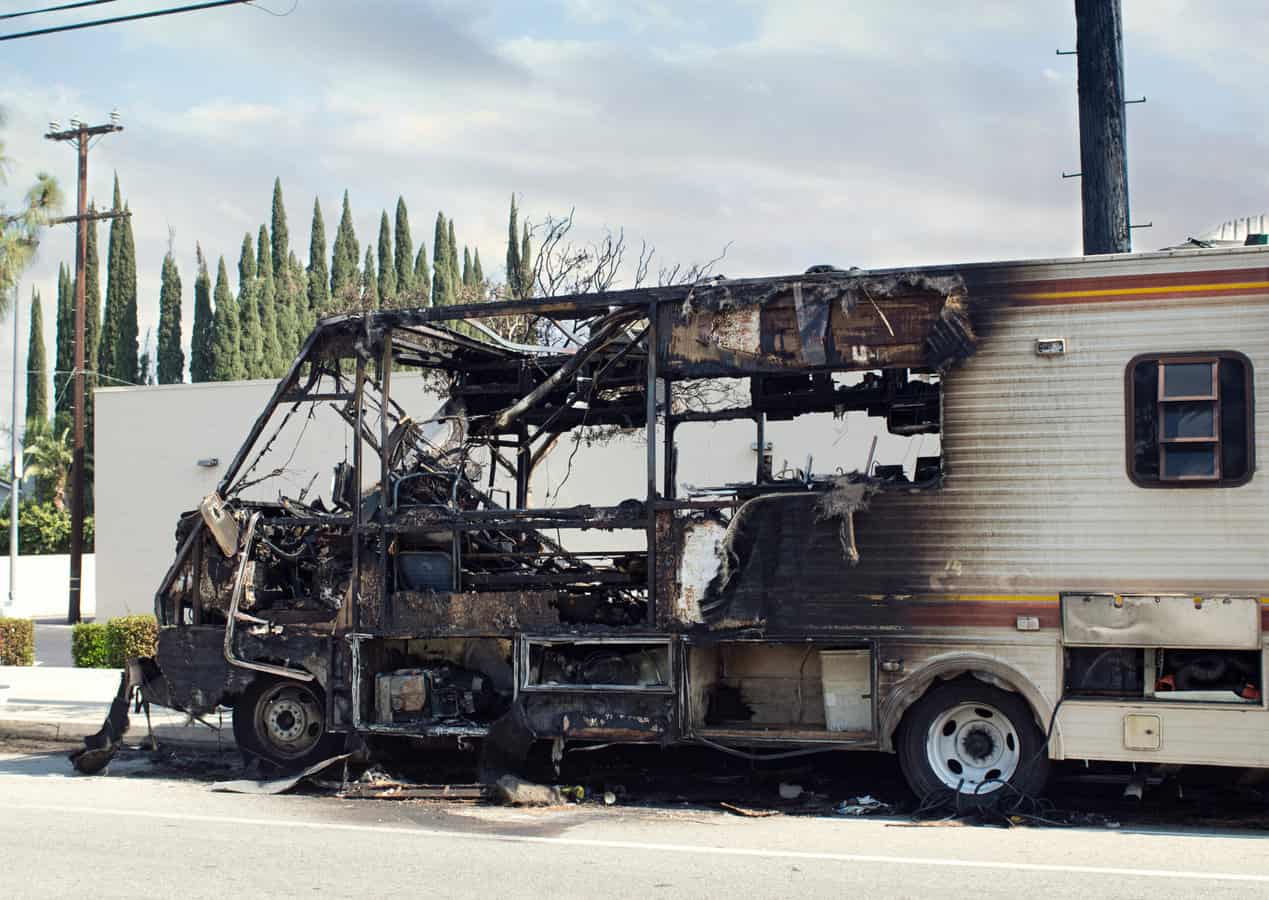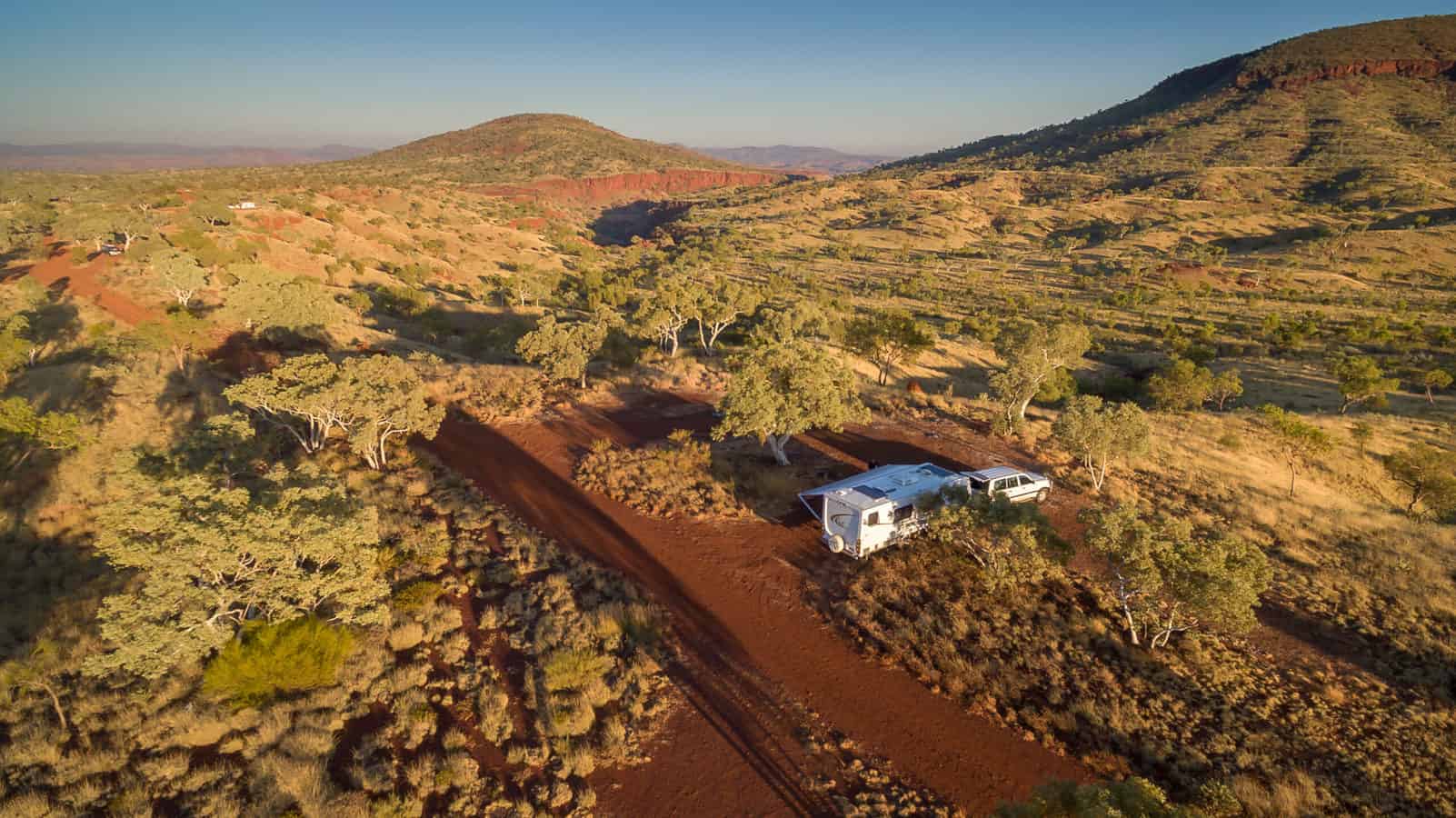
Shopping for a motorhome can be overwhelming, and there are a lot of factors to consider. While you may have daydreams of stretching out in a Newmar King Aire 4553 or the Featherlite Vantare Platinum Plus, a luxury living space usually means a lot of length which can cramp your go-anywhere mindset.
We’ve collected the 9 best motorhomes to make fitting in campgrounds ultra-easy, and while these may not be the million-dollar motorhomes of your dreams, what they lack in glassware and tech-savvy, they more than make up for in compact maneuverability.
Check out our top picks and find out what sets them apart and why they make the ranks.
Our Top 9 Motorhomes
Keeping in mind the statistic that most national campgrounds can accommodate motorhomes of an average of 27 feet, and generally have the most spots available for vehicles around that length, the most important aspect of our top 9 motorhomes is the ease of maneuverability and accessibility for most campgrounds.
Most of the motorhomes on our list are less than 25 feet long but range up to 31 feet and include functional living spaces.
We also stuck to primarily Class B motorhomes because of their flexibility on the road but included at least one Class C and a towable option.
We looked at several Class A motorhomes for this list but felt that overall, Class B motorhomes had more of the characteristics we look for in a motorhome the fits into most campsites easily and with the least amount of fuss.

Because the drivability of a Class B motorhome is more like a standard van, most drivers, especially those new to the mobile lifestyle, can transition more easily to these smaller units.
We also took into account the interior features of both the vehicle and the living space and picked some that are more basic and others that have more of a luxury feel.
That being said, everyone has their own preferences in regard to the size of living space and amenities both in and outside the motorhome so your favorites may look a little different.
Here are our top 9 picks:
1. Mercedes-Benz Sprinter Van
There’s a reason this model is one of the top-selling Class B motorhomes. It’s incredibly easy to drive both on- and off-road because of its high seating and tight turning radius. With the V6 diesel engine, this vehicle gets 18-22 mpg, which is enough on its own to recommend this motorhome. Many brands of Class B motorhomes use this model (or similar) as a base because of its customizable layout.
The Sprinter Van has great storage and enough space for a full-size bed and decently-sized kitchenette. The regular body comes in at only 20 feet, the extended body is just under 23 feet, and the long body reaches 24 feet. Even the most compact interior still has a roomy feel, though this van is probably best for just one or two people, and there are lots of great interior features, including top-of-the-line safety features and an excellent sound system.
2. Roadtrek Simplicity
Another beautiful Class B motorhome, the Roadtrek Simplicity is great for first-time RVers because it is so easy to drive and handles much like a minivan. Simplicity is the perfect name because this motorhome doesn’t have all the bells and whistles of pricier models but still has great functionality. This motorhome is built on the sturdy Ram ProMaster chassis, seats five and sleeps up to three people.
With a beautiful interior layout, the Roadtrek Simplicity has a full wet bath, and the rear sofa converts to a queen-sized bed. This model also comes with a 6-year transferable warranty and includes two years of roadside assistance. The exterior features include a twelve-foot manual awning, and with an overall length of just over 20 feet, this model can fit into most campsites with incredible ease.
3. Modvans CV1 Camper Van
As the name suggests, this is a modular vehicle that also has a pop-up camper top. Up top are three windows with privacy screens and a sleeping area big enough for two. There is a powerful engine for excellent drive quality which means this van can also tow a fairly heavy load. At just under 20 feet in length, this is another model that fits easily into most campsites and is easy to navigate in and out of tight spots.
The interior features two-row seating and the second row of seats can swivel 180 degrees. The rear bed folds to fit in the space behind the rear seats, and all of the interior features are completely removable if you want to customize. A great feature of the kitchenette is that the stove is on the same side as the sliding door, which is helpful for good ventilation while cooking. The interior control panel is helpfully located in one spot easily reachable from the bed, keeping your cell phone within reach while it’s charging.
4. Leisure Travel 2020 Unity Rear Lounge
If you’re looking ahead, check out this model which was the 2019 RVX Spotlight winner. While this beauty won’t be out until fall 2019, pre-orders are currently available so that you can be one of the first to roll up in this ride. Built on the Mercedes Sprinter Cab chassis, this innovative design includes two (yes, two) living areas. These areas are contained within a total length of 25 feet, so this luxury home on wheels will fit into most campsites with ease.
The rear living area has an entertainment unit with a 32″ TV and sofa with recliner seats that feature footrests. This area converts into a bedroom with a 57″ x 75″ Murphy bed. Up front is the galley and dining area with room for four. The dining area also converts into a sleeping area as well. One of the best features is the wireless charging station and that all the RV’s components are operational through touchscreens and can be automated.
5. Airstream Interstate Lounge EXT
This model was redesigned in 2018 to include a tankless hot water heater, a multiplex electrical system with touchpad controls, and an ultra quiet generator resonator. Some of the previously optional features, like the side screen door and extra rear seat are now standard. All this comes in an easy to handle driving experience that gets 18 mpg with its V6 diesel engine. At just an inch over 24 feet, this RV will also fit just about anywhere.
The roomy interior seats up to nine people and sleeps two. This model features two widescreen LED HD TVs, BluRay player, and a full wet bath with a built-in toiletry station and a clothesline. There are multiple color options available for the interior and the exterior features an almost 15-foot awning with patio lighting.
6. Winnebago View
This small Class C motorhome comes in at just over 25 feet in length, making it easy to find a campsite. It seats and sleeps four in the roomy interior which features a slide. This RV comes in three models, the 24D, 24J, and 24V with the biggest differences being the amount of exterior storage and freshwater capacity. In both of these categories, the 24J is going to give you the maximum capacity.
The beds vary according to the model and can be either a Murphy bed, corner bed with a headboard, or the flex bed system which can be used as either twin beds or combined to form a king.
The microwave doubles as a convection oven with touch control, and the galley features a double stainless steel sink with two sink covers. The U-shaped dinette is also a great feature which keeps the interior feeling spacious while still being incredibly functional.
7. Living Vehicle Live Series
This towable vehicle has a sleek and incredibly livable design. At over 27 feet for the box, from hitch to bumper this model hits almost 31 feet. While this is the longest recreational vehicle on our list, it still falls within a size range that is most likely to find an easily accessible campsite.
This model is so home-like that it fits especially well for full-timers and those who want to find a spot and set up camp for extended periods of time.
The Living Vehicle sleeps four and has an optional upgrade that increases the sleeping capacity to six. One of the coolest features of this recreational vehicle is that the exterior features a self-supporting gate deck door for an easily accessible outdoor living space.
The galley includes a modular kitchen island with a trash and recycling chute and a six-setting dishwasher. While this is also a pricey unit, the attention to detail and feeling of home is worth the extra payout.
8. Coachmen Galleria 24A
Coachmen calls themselves a “leader to the great outdoors” and for good reason. An established brand, Coachmen has a fantastic reputation and a huge line of recreational vehicles. We like this Class B motorhome with an exterior length of just over 24 feet that drives exceptionally easily.
This model features tons of interior storage, and the storage cabinets in the rear are very long, good for holding hard to store items like skis. The under bed storage area is also roomy and easy to access.
The twin beds include a raising feature so that both beds sit up easily and have reading lights with USB ports. The galley includes pull-out cabinets and lots of additional storage as well as motion sensor lighting. For pet lovers, there’s also an under-cabinet drawer with small food and water bowls for your cuddly traveling companion.
9. Pleasure-Way Lexor FL
New in 2018, this model RV has a front lounge and a bumper to bumper length of almost 21 feet. This model is built on the Ram ProMaster 3500 chassis and moves like a dream, making parking, driving, and navigating down difficult roads a really easy task.
By moving the closet from the front to the rear (as compared to the TS model), the front lounge area allows for easy seat movement. Instead, just behind the driver’s seat is a workstation accessible by swiveling the driver’s seat around and includes USB charging ports and a power outlet.
The interior also features a 24″ Smart LED TV with a swing-out mount, BluRay player, and Bose soundbar with Bluetooth. The cabinets feature recessed LED lighting and a full wardrobe with a sturdy hanging rod.
The enclosed wet bath includes a stainless steel sink, shower with shower curtain, and a ceramic bowl toilet with a foot flush. The touchscreen control panel operates the climate control center, water pump, lighting, awning, and generator. The rear seating area includes a sofa with two seat belts and memory foam cushions.
What to Know About Campsites
One of the biggest perks of having a motorhome is having your living space right behind you. But simply having that space isn’t the only thing to consider. In order to access the full potential of that space, you’re going to need a place to park it.
Not all campsites are created equal, but there are plenty of things that most campsites have in common. Basically, every campsite is simply a place to park your motorhome, camper, or travel trailer. But most campsites will also offer either partial hookups where you can access electricity and water or full hookups which include sewer service as well.
Campsite lengths, however, can vary greatly. Campgrounds generally categorize their available campsites by length and there are typically more sites that can accommodate smaller vehicles than larger ones.
It’s really important that you know how long your motorhome is. The sticker next to the RV door is helpful to give you an estimate, but that number usually only gives the length of the rig, or the box measurement only, which can be misleading.
To figure out the actual length of your RV, you also need to include additional elements attached on the outside of the main body of the motorhome like the spare tire, attachments like bikes, or front additions, if you’re towing, like the tongue and hitch.
Measure the overall length so you know what spot you’ll be able to fit. And never low-ball your length to try and access a site. That won’t do you any good when you’re rig doesn’t quite fit the space.
Many of the length restrictions on motorhomes in national parks and other campsites are due to long, winding, or difficult to navigate roads, so while they may seem arbitrary or inconvenient at times, they are ultimately there for your safety.
Some campgrounds may include the length of the tow vehicle in their site lengths if you’re hauling a travel trailer or fifth wheel, and if your motorhome is towing a vehicle behind it, you’ll want to make sure you’ve got space for that too.
Always ask the campground employees about these additions and whether you’ll need to park your commuting vehicle on the campsite or if there’s another lot where that vehicle can be parked.
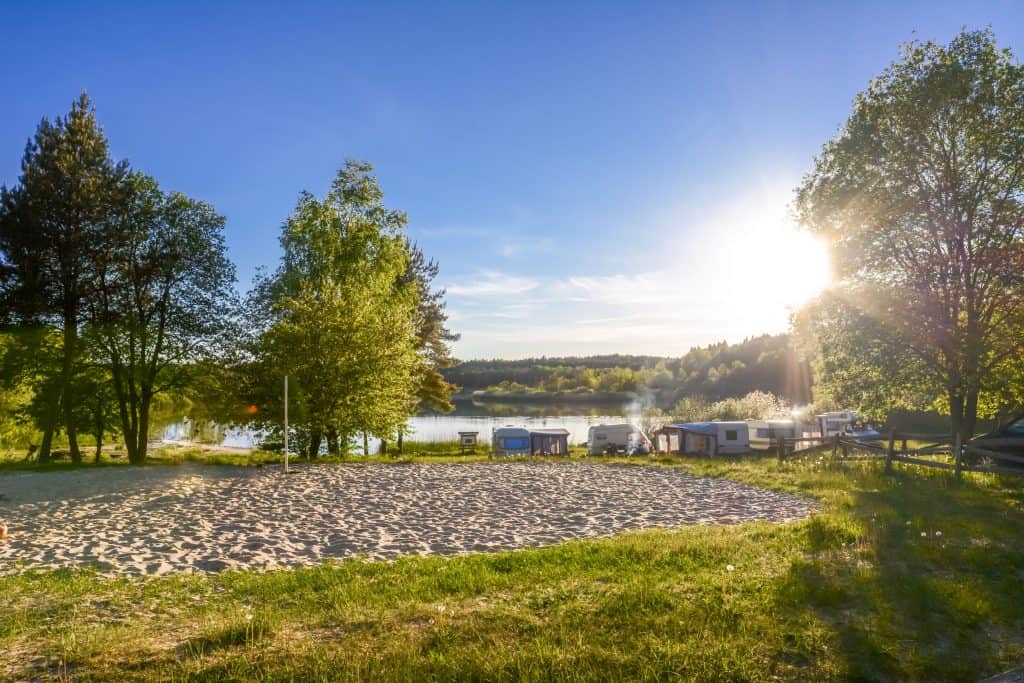
When looking for sites, you may also find it important to know whether the site is pull-through or back-in, so that you can figure out the best way to maneuver your site.
In addition to length, you may want to make sure that the area where you park will accommodate any slide-outs that will expand the width of your motorhome. You want to be sure that these additions can extend fully without bumping into trees or shrubs that separate you and your neighbors.
Height could be another concern, especially if your path to a campsite involves driving under bridges or low-hanging tree branches. You also need to be aware of the total height of your motorhome to ensure that you won’t get into any nasty scrapes.
While you can drive up to many campsites and pay to park, some campsites require reservations, particularly in touristy areas and during peak travel seasons. Other campsites operate under a first-come-first-serve basis. Be prepared to call ahead or book online to find out arrival and departure times and be sure that there is a space that can accommodate your motorhome.
National Parks vs State Parks vs Private Campgrounds
We’ve already established that not all campgrounds are the same, so it’s important to know what campgrounds are best for you to accommodate your needs.
National Parks
National park campgrounds are popular and for good reason. National parks are a great way to enjoy the beauty and fun that the country has to offer, and having a park pass makes getting in and out easy.
Every national park has different size restrictions for their campgrounds. The average motorhome size permitted is about 27 feet, but many have larger spaces available, though larger spaces are in shorter supply.
For example, Rocky Mountain National Park has four RV campgrounds. Two of those campgrounds limit RV or trailer length to 30 feet, one accepts lengths up to 35 feet, and only one campground in this park allows RVs or trailers up to 40 feet.
In Big Bend National Park in Texas, the Chisos Basin campground discourages the use of trailers over 20 feet and RVs over 24 feet.
National parks may also have additional restrictions about the use of generators and other noise-making devices. Many of these campgrounds are also older, get updated less frequently, and cannot necessarily accommodate some of the more up-to-date features of many motorhomes.
State Parks
State park RV camping can be similar to national parks, but because state parks are funded and maintained by individual states rather than the national park service, what you get from state to state (and from campground to campground) can vary widely.
Some motorhome campers find that state parks can be roomier and less expensive than many private campsites for motorhomes, but that isn’t always the case.
Some states, like Alabama, tend to always have hookups for water and electricity, but others, like Alaska, rarely do. Other features like laundry are hit or miss.
The rules within the campgrounds can also vary widely in regard to noise, alcohol consumption, stay length, and in/out regulations.
Campsite sizes also vary widely, so you should check beforehand to make sure that your motorhome size can be accommodated.

Private Campgrounds
If you don’t want to take advantage of national or state park campgrounds, or if none are available, there are usually plenty of private campgrounds eager to let you set up in their spaces.
Oftentimes, private campgrounds are going to have more available amenities for your motorhome, including full hookups, recreation areas, and features like wifi and laundry facilities.
Of course, these extras can come at a steeper price tag, and while private campgrounds tend to be in less out-of-the-way spots than national or state campgrounds, and thus easier to navigate, many of these parking spaces are fairly narrow to maximize the capacity within the private campground.
Just like with national and state parks, while there are usually spots for larger motorhomes, the larger spots are typically more limited, and a smaller motorhome, particularly ones 35 feet or less, is going to find more places to be accessible.
Of course, these aren’t the only options for parking your motorhome. There are also places to camp on land through the Bureau of Land Management, free areas as well as official campsites, Army Corps of Engineer campgrounds, and commercial parking lots at businesses like casinos, big box stores, and sporting goods stores (with permission, of course).
For all of these options, you’ll want to make sure that your motorhome can easily access the available area without a hitch.
Class A vs Class B vs Class C
It may be helpful to understand the differences between classes of motorhomes to better understand how sizes vary. The classes themselves describe more than just differences in length and include the overall build of the motorhome.
Another factor that differentiates the classes is how easy they are to drive. While you typically won’t need a special driver’s license, like a CDL, to operate a motorhome, some states have restrictions on larger recreational vehicles and require a special non-commercial license.
Be aware of what your state requires, and check your insurance company policy as well. Many insurance companies offer discounts for motorhome drivers who take classes on defensive driving or operating a motorhome.
Class A Motorhomes
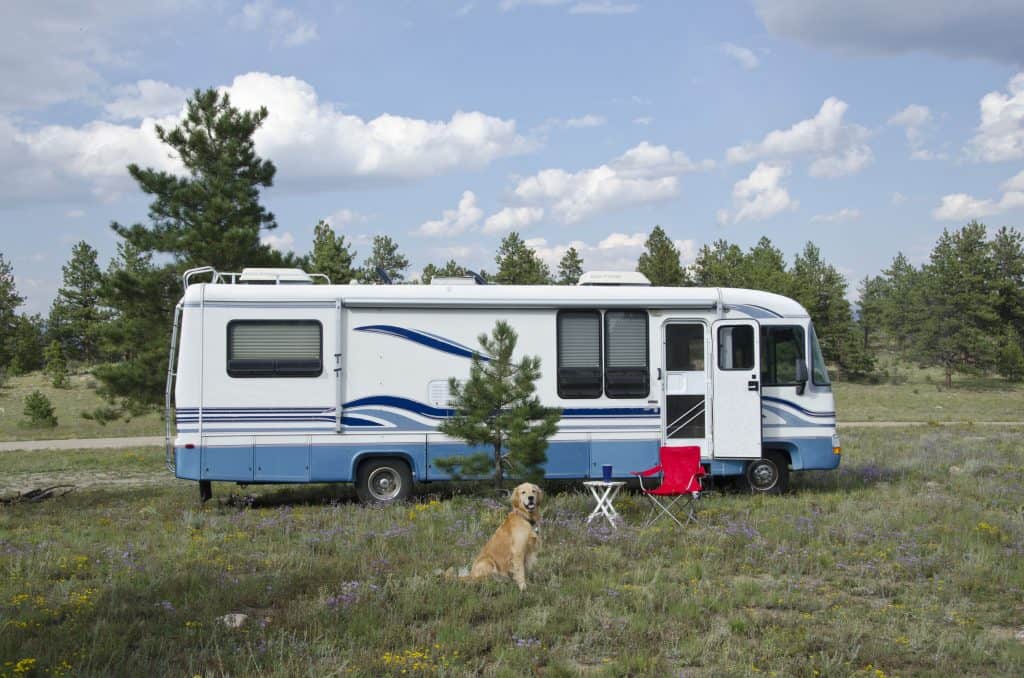
Class A motorhomes are some of the most common RVs on the road. These have the sturdiest frames and are the biggest motorhomes available on the market. Usually, these motorhomes range in length from 21-45 feet and are spacious, accommodating up to ten people and plenty of storage.
These motorhomes can be more difficult to navigate in tight or winding spaces, and because they can be so large, it can be more difficult to find space to park some of these behemoths.
Depending on the length and weight of your Class A motorhome, your state might require you to obtain a special license similar to those needed for driving heavy vehicles like buses or tractor trailers.
If using a Class A motorhome, especially one on the higher end of the market, you would probably also tow a commuter vehicle to explore the areas you visit while your motorhome is set up at camp which can increase the overall length of the motorhome and make it more difficult to park or find a campsite.
Class B Motorhomes

Class B motorhomes tend to be on the smaller end of the motorhome spectrum, around 20 feet in length, and are also sometimes referred to as camper vans. Because these recreational vehicles are smaller, they can often look like a large van rather than a motorhome.
These tend to also be built on the same frame as a typical van would, so they drive fairly easily and have great maneuverability, even in small spaces or twisty mountain roads.
This class is a bit hit with those new to RVing because they are so similar to driving a large vehicle and don’t require much special accommodation. It is important to be aware of your vehicle’s height, however, because you don’t want to get stuck in the Starbucks drive-thru on your morning coffee run.
Of course, a smaller overall size with increased driveability can also mean a much smaller living space. This can be a problem if you’ve got several passengers, if you’re tall, or if you just like to stretch out.
Class C Motorhomes
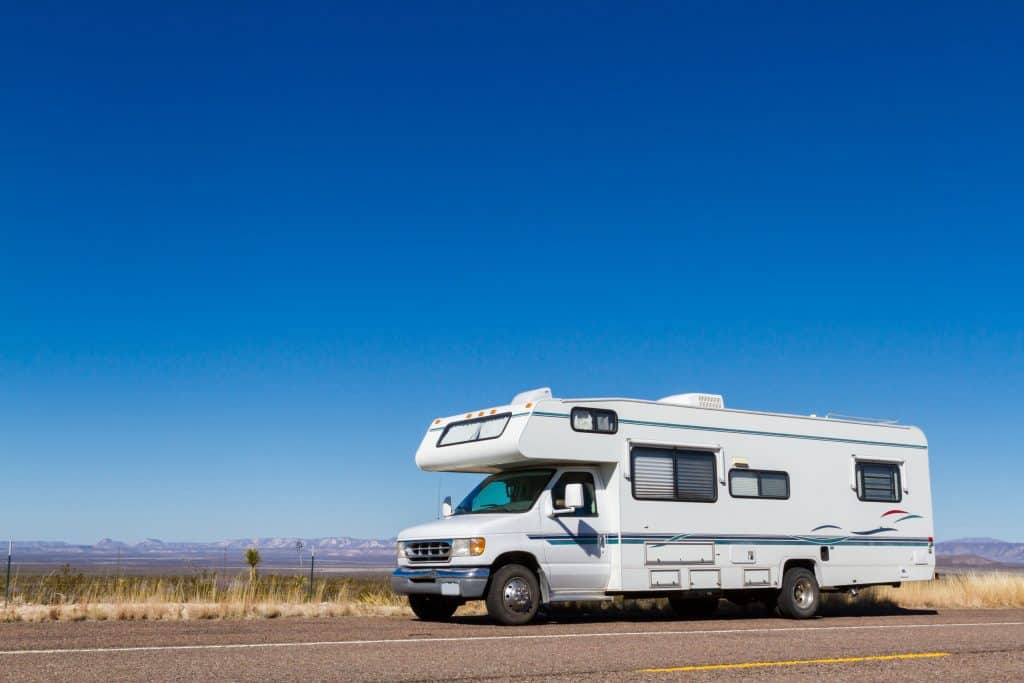
Class C motorhomes fits somewhere in the middle of Class A and Class B. While these are often built on a van body, like a Class B, they can be much larger, from 20-33 feet. Smaller than Class A motorhomes, these have more space than Class B and are often easier to navigate than Class A motorhomes.
While many Class C motorhome drivers choose to tow a smaller car for shorter excursions, it isn’t always necessary to have a second vehicle because of the easy driveability of the van chassis.
Because of the larger living space, Class C motorhomes are often a good choice for families. However, for new RVers, it can be difficult to get used to driving something so significantly larger than a typical van.
Some campgrounds also lump towable RVs into this Class C category. Towable RVs include fifth-wheel trailers, travel trailers, pop-up campers, truck campers, and trailers designed for cargo rather than occupancy like toy haulers and horse trailers.


